With beautiful beaches, delicious food, and traditional southern hospitality, the “Palmetto State” has the perfect recipe for a holiday getaway. And if you mix in the amazing fishing South Carolina offers, this part of the East Coast becomes a destination where even your wildest angling dreams could come true.
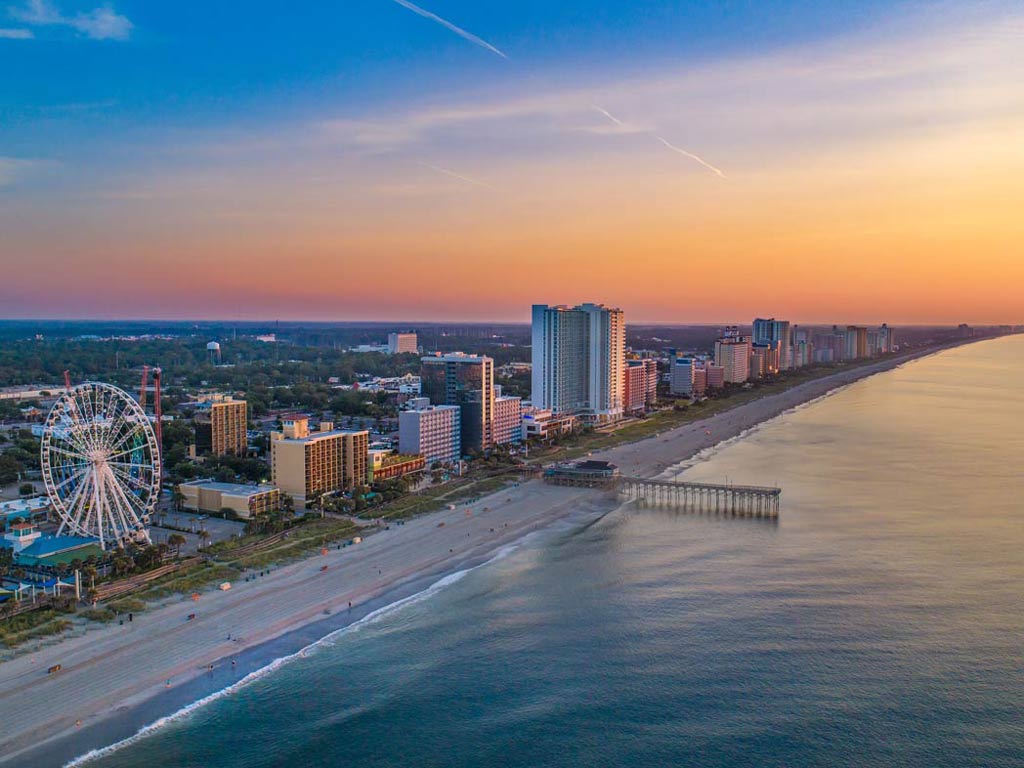
With 187 miles of coastline to explore, you’ll find no shortage of inshore waters to test your skills in. You’ll discover extensive marshes, flats, and inlets that provide habitat to numerous fish for you to chase. Move offshore instead, and you’ll be able to visit the Gulf Stream, where some of the fiercest game fish roam. Meanwhile, freshwater enthusiasts will have several world-class lakes to enjoy at their leisure.
If you’d like to find out more about fishing in South Carolina, stick with us. We’ll go on a journey, covering the species you can catch and the different saltwater and freshwater spots you can visit. We’ll also go over a few basic rules you should know before you start your adventure in these amazing waters.
Which fish species can I catch in South Carolina?
When you consider that there’s a whole ocean full of fish to explore, as well as freshwater rivers and lakes, you can imagine that there are many species you can catch in the Palmetto State. So instead of naming them all, we’ll focus on a few popular ones that we hope you’ll enjoy hunting. Take a look…
Redfish and Flounder
South Carolina is famous for its non-stop inshore fishing. Among all the different fish you can catch along its salty marshes, creeks, and inlets, Redfish and Flounder stand out as favorites. They’re both abundant in these waters, and the local anglers just love fishing for them.
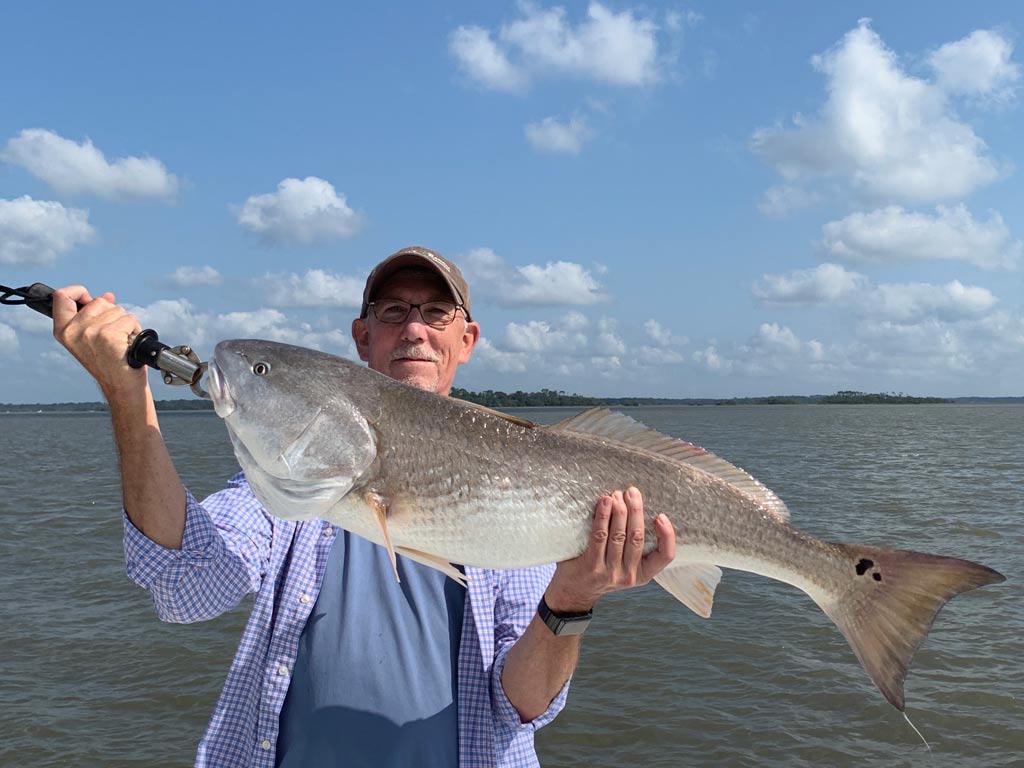
Between the two, Redfish are the more renowned fighters. They’re hardy fish, who’ll put up a stubborn battle when you hook them. The big ones, over 27″ long, are called Bull Redfish. They usually show up along South Carolina’s coast in September and October. When it comes to the smaller, slot-sized Redfish, you can catch them here year-round and they’ll make for delicious table fare.
Of course, Flounder are also super fun to catch. However, rather than their fighting qualities, anglers love these fish because they’re simply delicious. What’s even better is that you’ll often catch Flounder in the same marshes, creeks, and coastal saltwaters where you’d find Redfish. They’ll eat the same bait, too, making them the ideal duo to target on inshore trips in South Carolina.
King Mackerel and Mahi Mahi
As you move away from South Carolina’s shores and chart a course for the deep seas, you’ll get to target two popular pelagics – Mahi Mahi and King Mackerel. Both of these fish can grow fairly big and each will give you exhilarating fights.

King Mackerel are the first to reach these waters, usually in April. Mahi Mahi follow closely behind, showing up in May. The action for both of these fish catches fire during summer and stays solid all the way through October. In fact, the best time to reel in big King Mackerel is in the fall.
Whether you’re fishing for Mahi or King Mackerel, trolling is the name of the game. You’ll find King Mackerel around different reefs, edges, and dropoffs, both nearshore and offshore. Mahi Mahi, on the other hand, are often drawn to floating objects. So if you spot debris and weed lines on the surface of the ocean, or even birds swarming above, it could mean that there are Mahi nearby.
Billfish
Billfish also visit South Carolina’s waters in the summer, giving you the chance to experience what’s probably the greatest fishing challenge out there. They’re some of the fastest, strongest, and most acrobatic fish in the ocean. And while Billfish are often difficult to find, hooking one is a sure ticket to a spectacular battle.
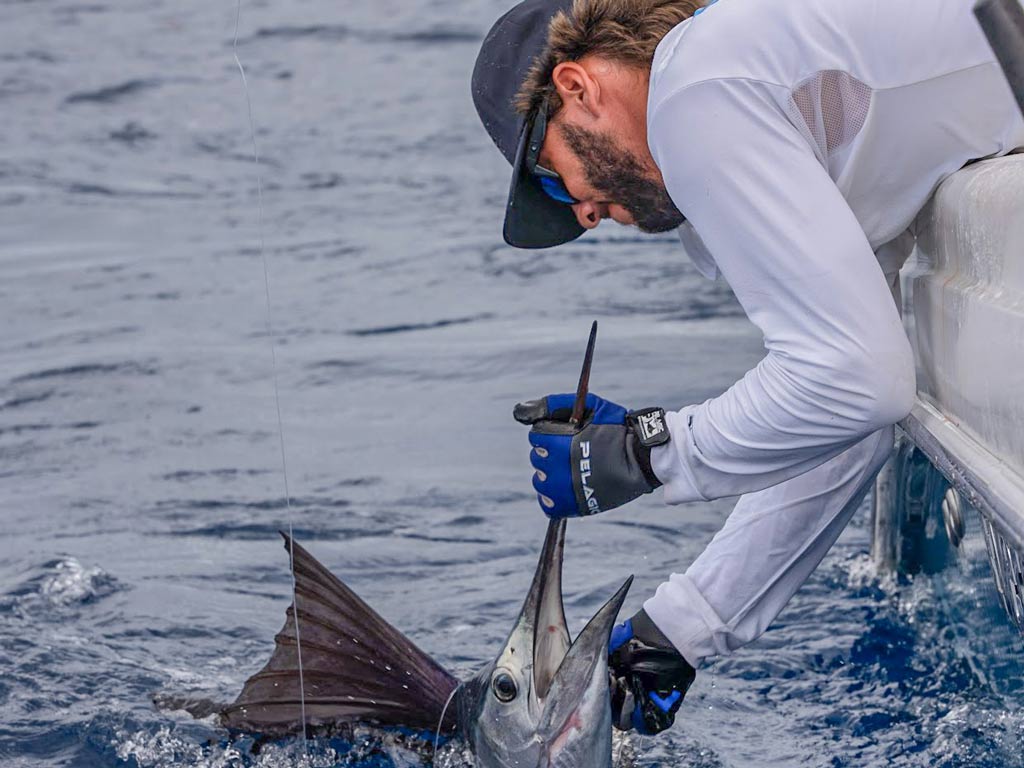
You’ll see four types of Billfish racing through the cobalt-blue waters of the Gulf Stream. They include Blue Marlin, White Marlin, Sailfish, and Swordfish. To get the chance to reel them in, you’ll have to ride 40 to 50 miles offshore, depending on where in South Carolina you depart from.
When going after Marlin and Sailfish, you’ll usually do so by trolling. Swordfish, however, lurk at depths of over 1,200 feet, requiring deep dropping gear and ideally electric reels. Also, you’ll need to go farther from the coast if you’re set on wrestling a Swordfish. The waters get deep enough only once you’re 70 and more miles offshore.
Bass
As we mentioned earlier, South Carolina is not just about saltwater fishing. The state’s freshwaters are home to a variety of fish, including Bass. Known for their intelligence and the fantastic struggle they put up when hooked, Bass are nationwide favorites for a reason.
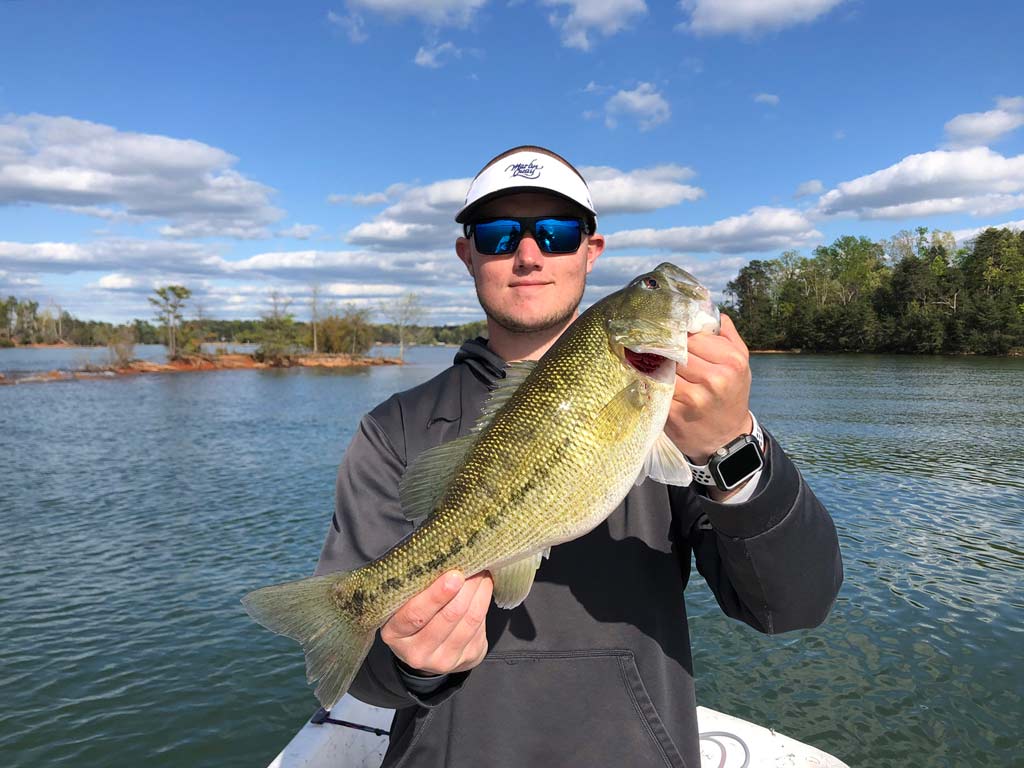
In most of the lakes in the Palmetto State, you’ll find Largemouth Bass swimming about. Their Smallmouth cousins are also stocked in some waters, though you’ll have to hit specific lakes to have the chance to catch them. Finally, although they’re not related to the other Bass we mentioned, you’ll also find lots of Striper Bass in various waters across the state.
The best action for these fish usually takes place during spring and fall, when the water temperatures are mild. During these times, you’ll find Bass lurking in shallow waters, near underwater points, humps, ledges, and other formations.
And Many Others!
So what else can you catch fishing in South Carolina? The quick answer would be – a whole bunch of fish. The coastal waters are inhabited by the likes of Speckled Trout, Black Drum, Sheepshead, Spanish Mackerel, and even Tarpon.
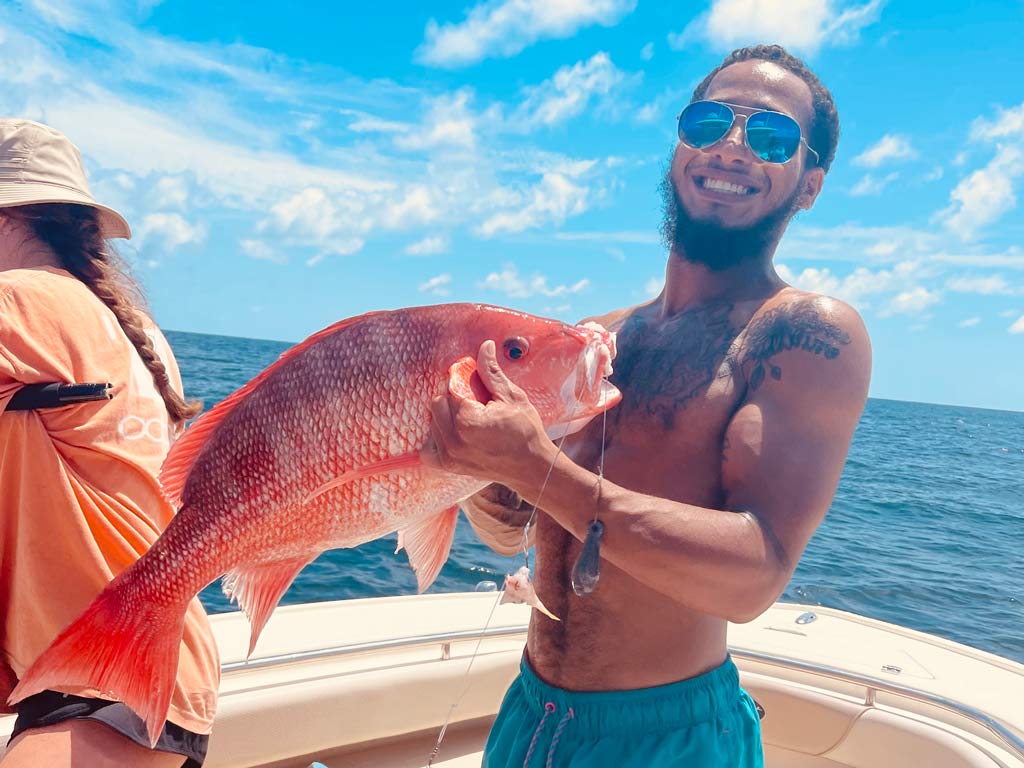
The reefs, on the other hand, hold the promise of Snapper, Grouper, Triggerfish, Amberjack, and other delicious bottom fish. Offshore, you’ll see Tuna and Wahoo in addition to the pelagics we mentioned previously. There are also Cobia, Barracuda, and several types of Sharks who’ll prey on your bait and even the fish you hook.
Then, there’s a whole world of freshwater fish you’ll see in South Carolina’s rivers and lakes. Besides Bass, you’ll have the opportunity to catch plenty of Catfish, Crappie, Bluegill, Longnose Gar, as well as Trout. We’ll stop now, but there are probably dozens of other species we could name. That’s just how diverse South Carolina is!
Where is the best fishing in South Carolina?
By now, you might be thinking “Okay, but where do I go to reel in all these fish?” If so, read on. We’ll introduce you to some of the best places to explore and start your adventure from.
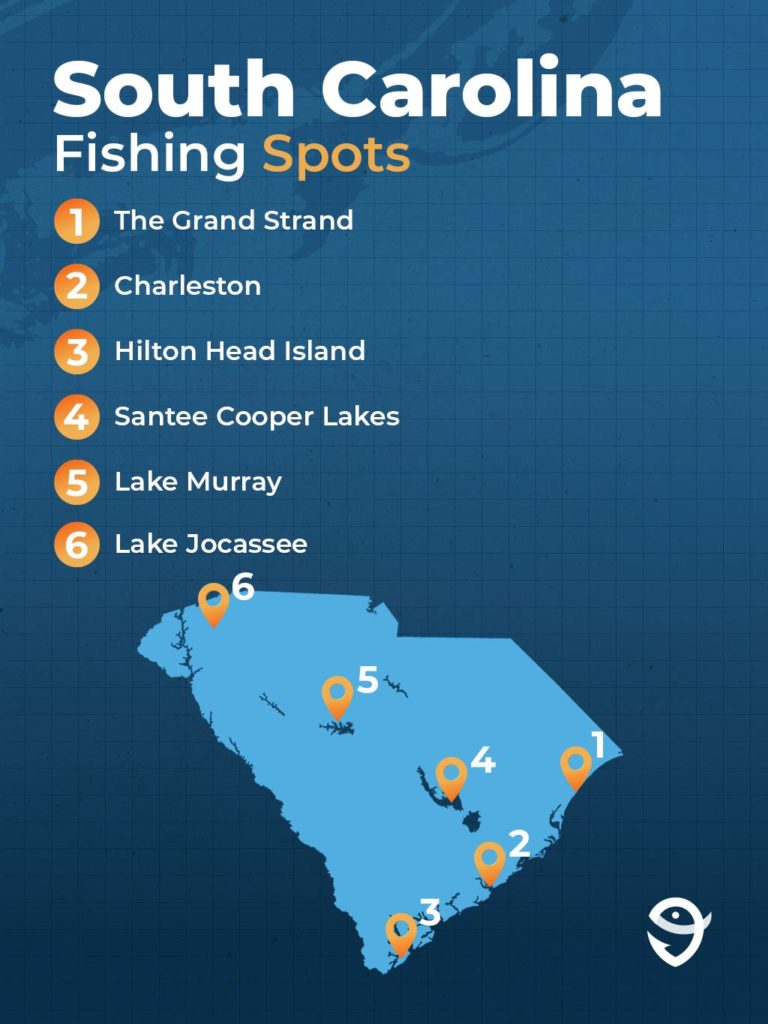
The Grand Strand
Stretching from Little River on the northern border of the state, down south to Winyah Bay, the Grand Strand features numerous coastal fishing spots. It’s also where you’ll find Murrells Inlet and Myrtle Beach, two major charter fishing hubs in South Carolina.
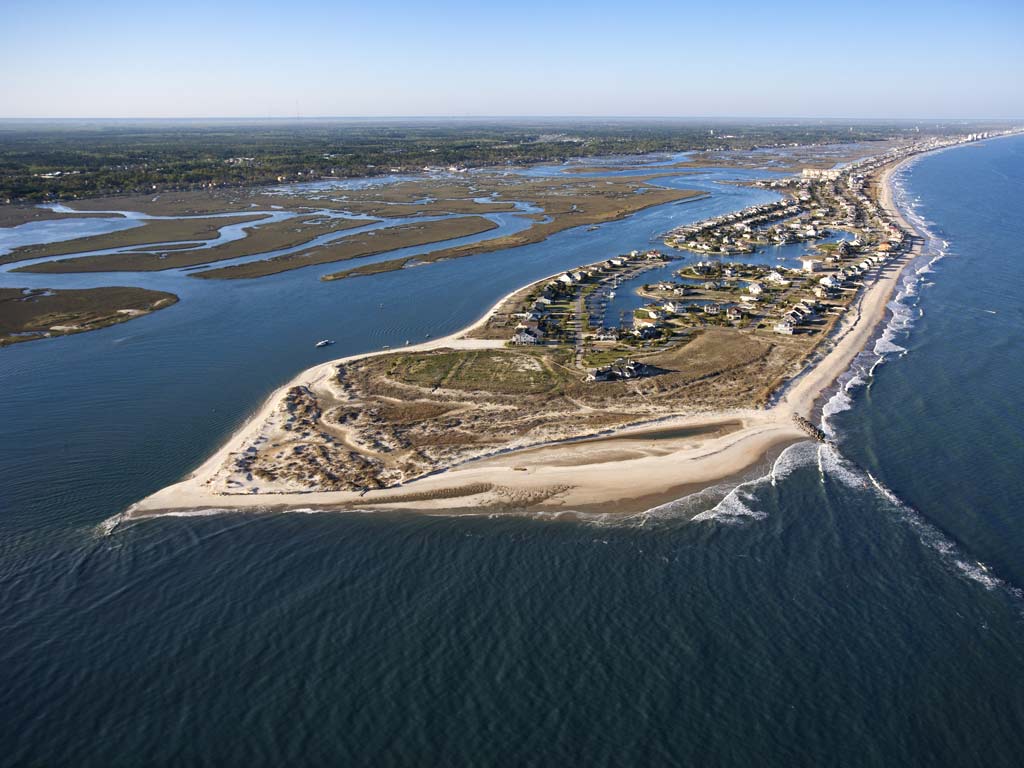
The Grand Strand features numerous inlets, creeks, and marshes. These are a treasure trove of Redfish, Flounder, Speckled Trout, and other inshore species. Here, you can fish from shore, a boat, or even a kayak. Alternatively, hop on a charter in one of the hubs we mentioned above and you’ll be able to fish as far as the Gulf Stream.
For freshwater anglers, there’s the Waccamaw River that flows for nearly the entire length of the Grand Strand. Largemouth Bass, Sunfish, Catfish, Bowfin, and Gar all lurk in these waters, giving you plenty of options no matter when you visit. The Grand Strand also offers numerous attractions, resorts, and beaches to relax on, making it the perfect vacation spot.
Charleston
Charleston is situated at the confluence of the Ashley, Cooper, and Wando rivers, giving it the perfect position for all kinds of fishing trips. As South Carolina’s largest city, it also boasts a huge fleet of charter captains. So whether you’re looking to explore the inshore waters or fish the deep seas, you’ll be able to find specialized guides to tailor your adventure to your taste.

From Charleston, the Gulf Stream lies about 50 miles offshore, making it one of the best starting points if you’d like to go deep sea fishing in South Carolina. Mahi Mahi, Wahoo, Tuna, Marlin, and a range of other fish can be caught there. If you’re not too keen on going that far, you can instead stick to the nearshore reefs and put some Snapper and Grouper in the cooler.
Of course, the local inshore fishing is fantastic as well. The waters of Charleston and the nearby Mount Pleasant are abundant with Black Drum, Redfish, Sheepshead, and Flounder. And if you’d like to fish from shore, the Old Pitt Street Bridge in Mount Pleasant is a solid place to do so.
Hilton Head Island
South Carolina is also home to one of the finest vacation destinations in the country – Hilton Head Island. The island is famous for its stunning beaches, world-class golf courses, and bike trails. And since we’ve included it in the list, you can safely assume that the fishing is amazing as well.
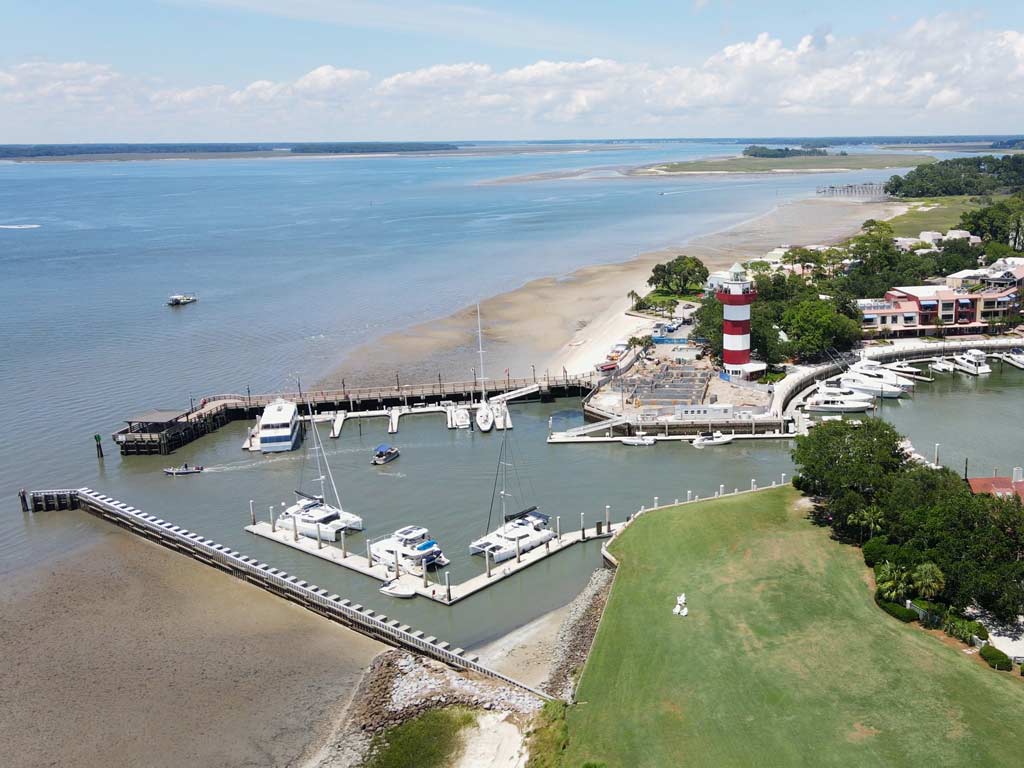
In terms of inshore fishing, there’s the Calibogue Sound on the southern end of Hilton Head Island. North of the island, you’ll see Port Royal Sound and the extensive marshes surrounding Beaufort. Add in the different creeks and lagoons and you’ll quickly discover there’s no shortage of fishing spots to explore.
The coastal waters will have plenty of Redfish, Tarpon, Black Drum, Speckled Trout, and other inshore fish to catch. Once you head a little into the ocean, you’ll get to bottom fish for Black Seabass and various kinds of Grouper and Snapper, or troll for King Mackerel, Mahi Mahi, and more.
Santee Cooper Lakes
While its origins are sometimes a subject of debate, many anglers claim Lake Marion and Lake Moultrie are where the famed Carolina rig was first developed. The waters of these lakes necessitated a rigging system that you could use to present the bait to fish lurking in the depths. And, if you believe the stories, it’s how this popular rig was born.
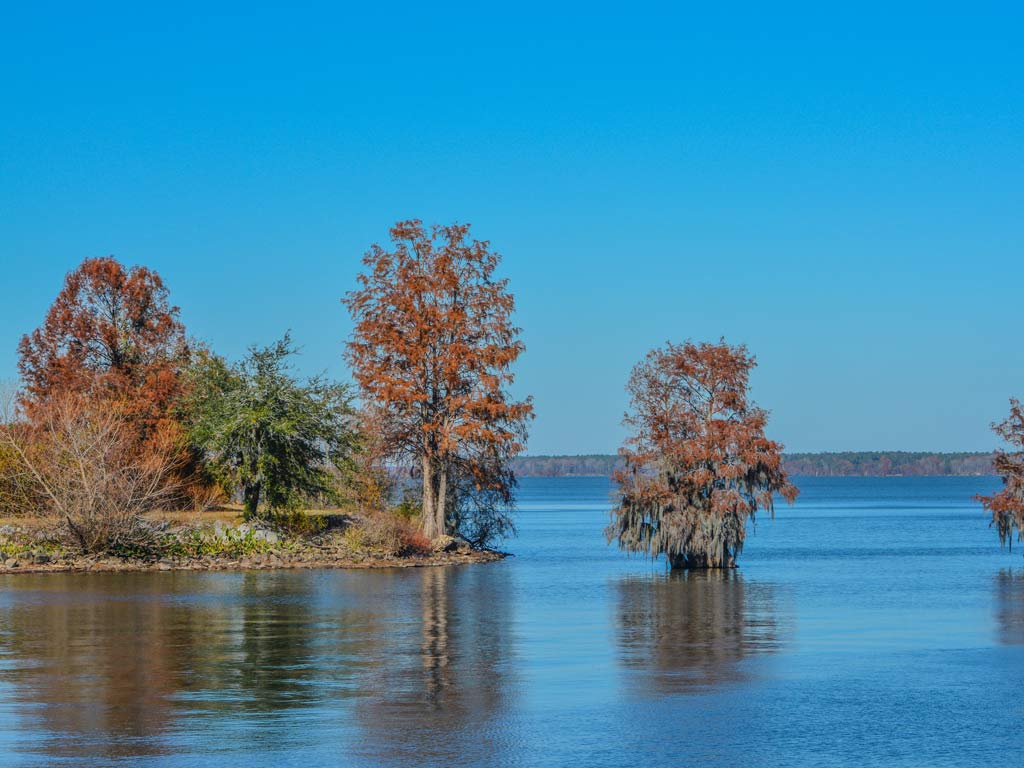
Of course, probably none of this would have happened if the two Santee Cooper lakes didn’t have such amazing fishing. Both Lake Marion and Lake Moultrie offer amazing Catfish, Crappie, Striped Bass, and Largemouth Bass action. In fact, Lake Marion holds the state record for Largemouth Bass, while Lake Moultrie holds the world record for Channel Catfish. How about that?
Thanks to South Carolina’s mild climate, fishing in the Santee Cooper lakes takes place year-round. The Bass follow their usual patterns of going shallow in spring and fall and hiding deep during winter and summer. Catfish, meanwhile, are the most abundant species in these waters. Besides the previously mentioned Channel variety, there are also Blue and Flathead Catfish swimming about.
Lake Murray
Located just west of Columbia, Lake Murray is another freshwater spot renowned for its fishing. It plays host to numerous state and national tournaments, including the 2022 Black Bass World Championship. The lake’s waters are world-class and anglers all over the planet know it.
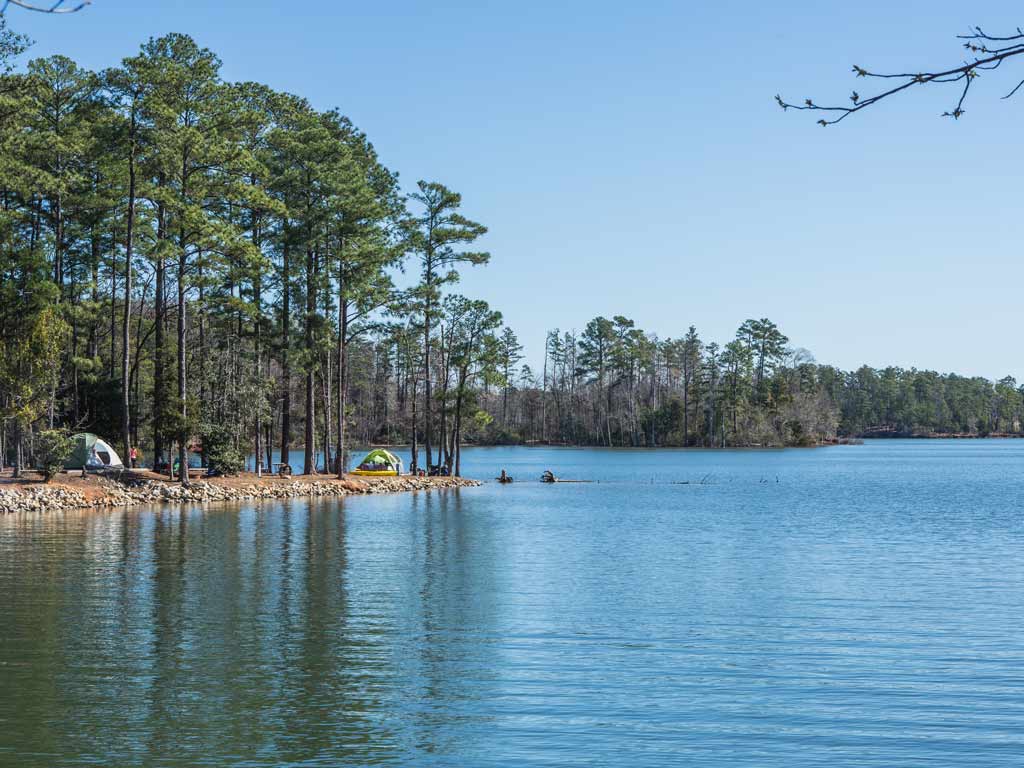
There are several species of fish you can reel in on Lake Murray, but the fishery excels with its Striped Bass and big Largemouth Bass opportunities. These two species are the most popular targets on the lake. However, there are also White Bass and White Crappie, both of which the lake holds the state records, as well as Bluegill, Catfish, and Sunfish.
It’s also worth noting that Lake Murray offers lots of other activities. There’s beautiful scenery all around it, making it great for hiking, picnics, cycling, or birdwatching. During summer, you can enjoy kayaking, wakeboarding, swimming, and jetskiing once you’ve caught your share of fish.
Lake Jocassee
Although there are many other good spots to fish in South Carolina, the final location we’ll mention in this article is Lake Jocassee. It’s one of the most breathtaking lakes in the state, with clear, emerald-green waters, picturesque waterfalls, and lush greenery all around.

What makes this lake special is that there are several cold mountain rivers flowing into it. And where there are cold waters, there are Trout! Anglers can catch both Brown and Rainbow Trout in Lake Jocassee, and the lake holds state records for both species.
Aside from Trout, there are many more other fish inhabiting the lake. These include Largemouth and Smallmouth Bass, different kinds of Catfish, Bluegill, Crappie, and others. What more could an angler ask for?
South Carolina Fishing Rules and Regulations
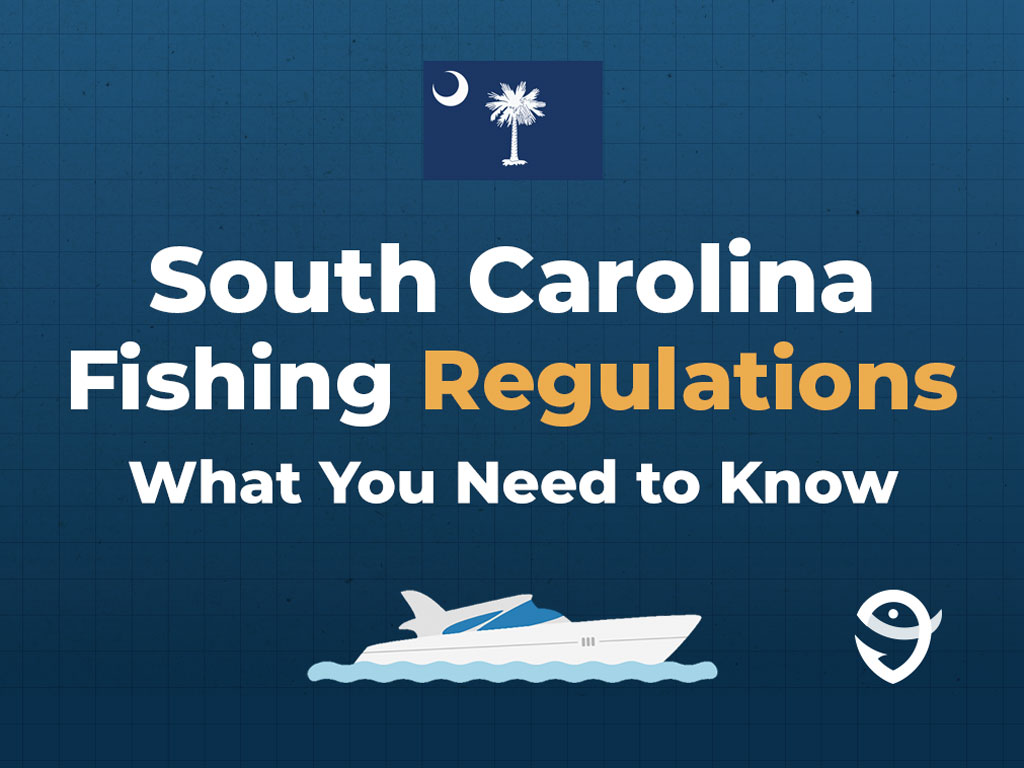
In South Carolina, anglers aged 16 and older need to have fishing licenses in order to fish legally. However, when you fish on board saltwater charter boats, your captain will cover you. If you’re unsure whether you need a freshwater or a saltwater license, Highway 17 is considered the official dividing line. The waters west of the highway are considered freshwater, while everything east is saltwater.
If you’re fishing on your own, make sure to check out the fish size and bag limits before you head out. The fishing takes place year-round, but some species may be closed for harvest around the time you might be planning your trip. On charter boats, the captain will usually keep track of what’s legal catch and what’s not, so you can relax and focus on the fishing.
South Carolina: Home to World-Class Fishing
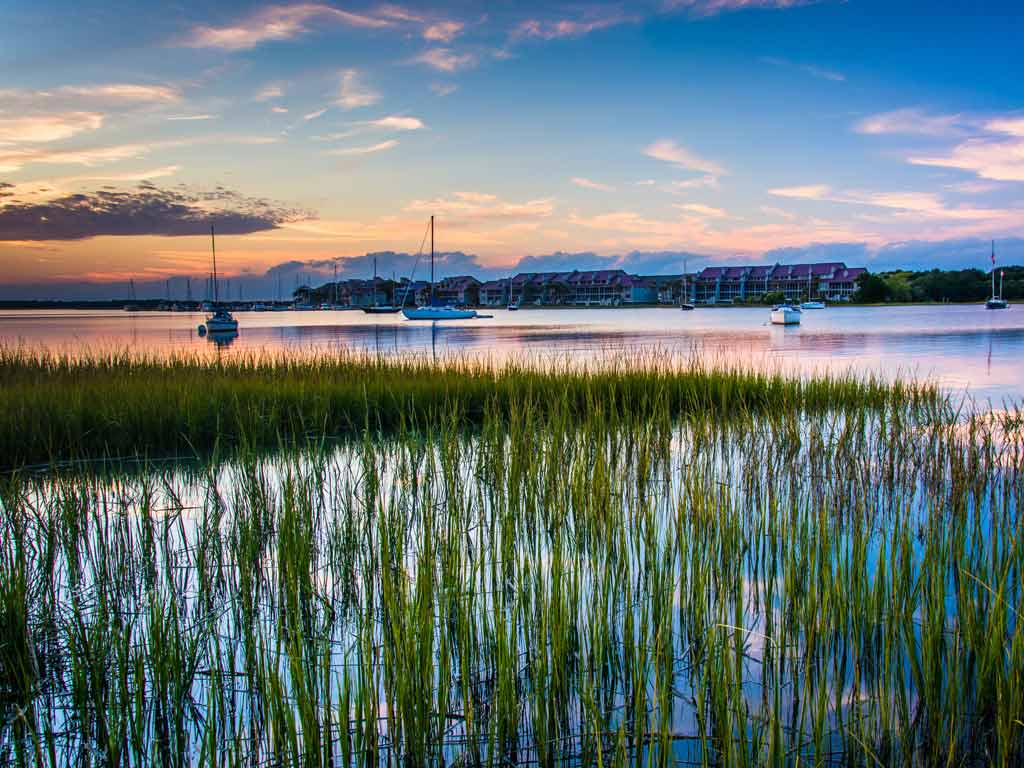
And there you have it, we hope you now have an idea of just how diverse and exciting South Carolina’s waters are. Maybe you even have a location you’d like to visit in mind already. Either way, you can rest assured that these fishing grounds are truly the best of the best. So all you have to do is plan your adventure and the fish will be there for you to reel in.
Have you ever been fishing in South Carolina? What’s your favorite species to target? Scroll down to the comment section and let us know!
The post Fishing in South Carolina: The Complete Guide appeared first on FishingBooker Blog.
https://ift.tt/hgnTDEr
0 Comments
Enregistrer un commentaire